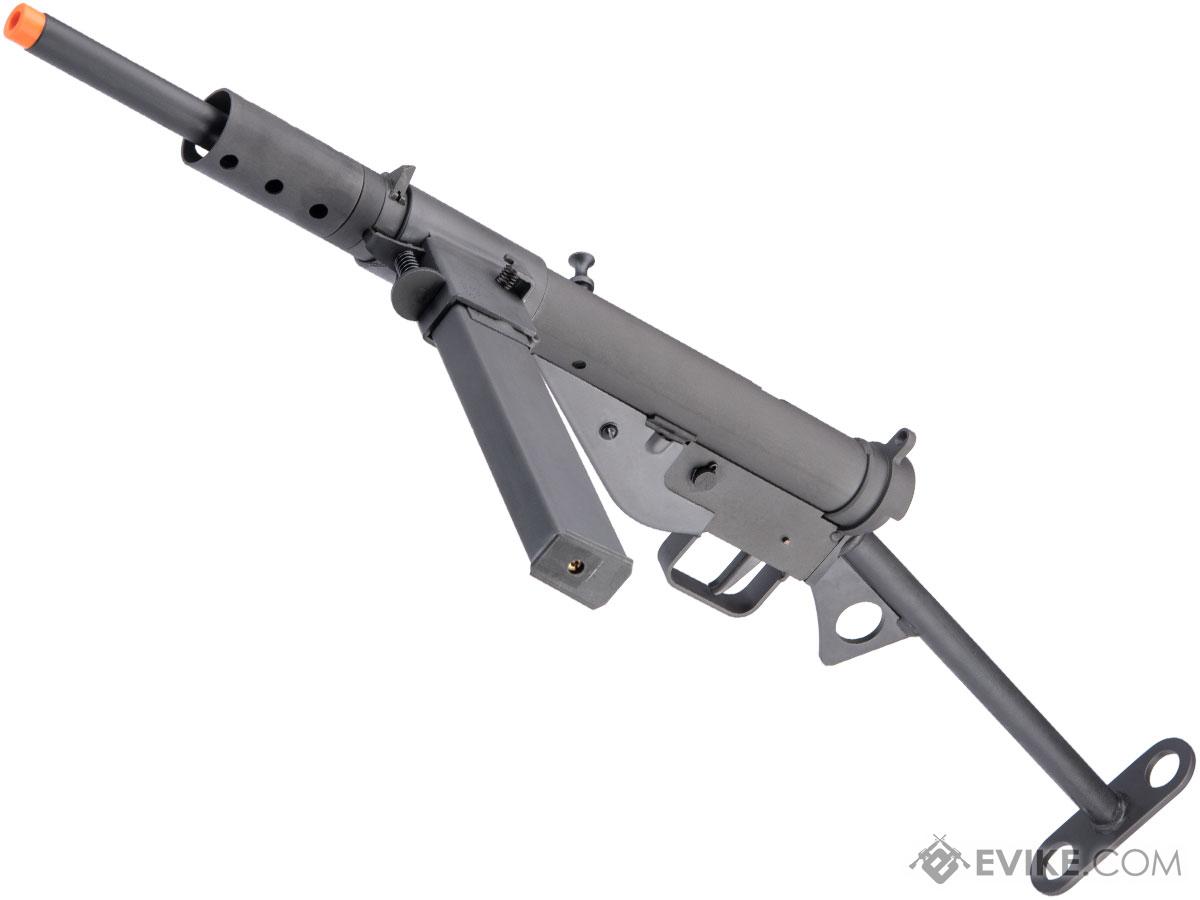

However, a 1940 report stated that "Exaggerated reports about the unreliability were usually related to the quality of manufacture. Most changes to the production process were more subtle, designed to give greater ease of manufacture and increased reliability, and the potentially great differences in build quality contributed to the Sten's reputation as being an unreliable weapon. For example, the Mark 4 cocking handle and corresponding hole drilled in the receiver were created to lock the bolt in the closed position to reduce the likelihood of unintentional discharges inherent in the design. The Sten underwent various design improvements over the course of the war. The Mark I was a more finely finished weapon with a wooden foregrip and handle later versions were generally more spartan, although the final version, the Mark V, which was produced after the threat of invasion had died down, was produced to a higher standard. Some of the cheapest versions were made from only 47 different parts. Over the period of manufacture, the Sten design was further simplified: the most basic model, the Mark III, could be produced from five man-hours of work. Much of the production could be performed by small workshops, with the firearms assembled at the Enfield site. The Sten used simple stamped metal components and minor welding, which required minimal machining and manufacturing. The Lanchester and Sten magazines were even interchangeable (though the Lanchester's magazine was longer with a 50-round capacity, compared to the Sten's 32.) In terms of manufacture, the Lanchester was entirely different, being made of high-quality materials with pre-war fit and finish, in stark contrast to the Sten's austere execution. The Sten shared design features, such as its side-mounted magazine configuration, with the Lanchester submachine gun being produced at the same time for the Royal Navy and Royal Air Force which was a copy of the German MP28. Shepherd had been recalled to service after having retired and spending some time at the Birmingham Small Arms Company (BSA). Harold John Turpin, Senior Draughtsman of the Design Department of the Royal Small Arms Factory (RSAF), Enfield. Shepherd, OBE, Inspector of Armaments in the Ministry of Supply Design Department at The Royal Arsenal, Woolwich, (later Assistant Chief Superintendent at the Armaments Design Department) and Mr. In order to rapidly equip a sufficient fighting force to counter the Axis threat, the Royal Small Arms Factory, Enfield, was commissioned to produce an alternative. American entry into the war at the end of 1941 placed an even bigger demand on the facilities making Thompsons.

Prior to 1941 (and even later) the British were purchasing all the Thompson submachine guns they could from the United States, but these did not meet demand, and Thompsons were expensive, costing $200 in 1939 (and still $70 in 1942), whereas a Sten would turn out to cost only $11. The army was forced to replace weapons lost during the evacuation from Dunkirk while expanding at the same time. The Sten emerged while Britain was engaged in the Battle of Britain, facing invasion by Germany. 3.9 Foreign-built variants and post-1945 derivatives.Over four million Stens in various versions were made in the 1940s, making it the second most produced submachine gun of the Second World War, after the Soviet PPSh-41. Sten is an acronym, from the names of the weapon's chief designers, Major Reginald V. The Sten is a select fire, blowback-operated weapon and loads its magazine on the left, rather than the bottom, as is the usual configuration. The Sten served as the basis for the Sterling submachine gun, which replaced the Sten in British service until the 1990s, when it, and all other submachine guns, were replaced by the SA80. They had a simple design and very low production cost, making them effective insurgency weapons for resistance groups, and they continue to see usage to this day by irregular military forces.

The STEN (or Sten gun) is a family of British submachine guns chambered in 9×19mm which were used extensively by British and Commonwealth forces throughout World War II and the Korean War. Various underground resistance group factoriesģ.7–4.6 million (all variants, depending on source) Long Branch Arsenal Canada (plus numerous sub-contractors making individual parts)


 0 kommentar(er)
0 kommentar(er)
